Hifi Pig first reviewed the LEEMA LIBRA DAC way back in August 2016. In this update to that review, Stuart Smith takes a slightly different viewpoint and makes very different conclusions, but based on very similar findings, to the initial review.
that review, Stuart Smith takes a slightly different viewpoint and makes very different conclusions, but based on very similar findings, to the initial review.

Front Panel OF The Leema Libra DAC
Regular readers of Hifi Pig will be well aware of the Welsh manufacturer Leema Acoustics, founded by ex-BBC engineers Lee Taylor and Mallory Nicholls (LeeMa). Originally focusing on creating a mini-monitor loudspeaker to the very highest standards, Leema has expanded their outlook since launching 1998 to include a whole range of electronics, including DACs, Servers, CD players, Phonostages, music servers, power amps, pre-amps and integrated amps which are spread over three ranges – Elements, Steller and the top of the range Constellation. Leema also produces a range of audio cables.
What we are looking at today is the Libra DAC which falls under the Constellation range of electronics ( we already reviewed it way back in August of 2016, ) and so this review is more by way of a bit of an update to that review and by way of giving a different spin on that reviewer’s conclusions. The original review concluded that the LIBRA had “Plenty of power, detail and nuances to the sound, although lacking involvement and emotional connection. It isn’t bland or sterile by any means” and added, “ (it is) Perhaps a bit too much neutral-sounding”. I’d like to look at the DAC/Pre through new eyes and through our highly resolving reference system.
Now, I recently wrote an article for Hifi Pig asking the question “What is HiFi” and by definition, it is a product/piece of kit that reproduces the signal it is presented with “with a great degree of exactness.” The original review’s conclusion bears this out but says the LIBRA lacks emotional involvement. However, if we are as audiophiles looking to get the nth degree of exactness out of a product, then perhaps the LIBRA actually fulfils this benchmark and needs to be discussed with this criterion in mind. As a person who reviews a lot of kit,what we are looking for in our main system is a series of products that work together symbiotically and in as neutral a way as possible so that we can slot a new product in the chain and hear exactly what it is doing. Of course, we also listen to a lot of music purely for pleasure and so any product that finds a permanent place in our reference system needs to be highly enjoyable. With that said, we have two systems within one – a review system using highly transparent class D monobloc amps and a pair of Audiovector S3 loudspeakers, and a system we have using a Jean Hiraga Le Monstre amp and Avantgarde Duo XD loudspeakers. For both systems the kit ahead of the pre/DAC is identical. For the record, both systems now use the same DAC – the LEEMA LIBRA, where previously the Lampizator Big7 DAC sat, which may well give you a clue as to where this mini-review is going to end up.
I’m not going to go into masses of detail about the features of the LEEMA LIBRA as they have already been covered in the previous review, but briefly, they are (and taken from LEEMA’s specification sheet):
Analogue Inputs: 3 (configurable as Balanced or Un-Balanced)
Bluetooth interface
Headphone Amplifier
S/PDIF Coaxial Inputs: 3 (24 bit 192kHz & DSD64)
S/PDIF Optical Inputs: 3 (24 bit 192kHz & DSD64)
I2S Inputs: 2 via RJ45 connectors (24 bit 384kHz, DXD, DSD64 & DSD128)
One I2S Input has fully programmable pin allocation
AES/EBU Inputs: 2 via XLR connectors (24 bit 192kHz & DSD64)
Asynchronous USB: Yes (24 bit 384kHz, DXD, DSD64 & DSD128)
USB: fully asynchronous – Windows & Macintosh
USB Isolation: Full Galvanic
The three coaxial and three optical inputs will reproduce 24-bit/192kHz audio and since an upgrade, it can provide DSD64, DSD128, DXD & 384kHz via the USB and I2S inputs. DSD64 is also supported via all SPDIF inputs (coax and optical) and AES/EBU inputs.
The outputs, importantly for us given the two systems in one outlook I touched on, are via balanced XLR (which feed the Merrill Thor Class D amps) and RCA (which feed the Hiraga Le Monstre).

Every Input and Output You Could Wish For
So, feature-wise the LIBRA is hugely well endowed and has more than enough inputs to satisfy even the most feature-hungry music lover.

A Look Inside the Leema Libra DAC
Interestingly, the LIBRA doesn’t use the usual suspects with regards to its’ DAC chips and instead uses the unique Quattro Infinity dual-mono DAC modules. According to the blurb on the LEEMA website these modules “…feature user-selectable output filter bandwidth for maximum flexibility with higher sample rate sources. They are also field replaceable. Should conversion technology improve in the future, the modules may be upgraded, thereby future-proofing your investment.” Good to know.
SOUND
I’m not going to go into detail as to what tunes I listened to and what I thought about the presentation of each of those tunes, rather I am going to speak in broader terms with regards the sonic signature of the LIBRA.
First of all, the previous review levelled a criticism that the LIBRA was perhaps “too neutral”, but for me, that is exactly what I am looking for with a piece of kit in this system. It is a piece of equipment that allows the listener to see into the recording and pull it apart detail by minute detail – in short, the LIBRA is hugely meticulous in its presentation as to what is going on in a recording. There is no place to hide…NONE! If we go back to the definition of High-Fidelity then the LIBRA DAC fulfils this definition brilliantly. See it as a benchmark in the physics lab meaning of the word and you get to understand what the LIBRA is bringing to the test-bench. If you are looking for a product that will cover up inadequacies in a recording, or electronics that precede it in the audio chain, then you will want to look elsewhere, I’m afraid. If you are looking for a product that offers true “high-fidelity” performance then you will be well served, and at a price that is very reasonable indeed for the level of reproduction and features on offer.
Often reviewers will level the criticism that a piece of equipment is just too revealing and as such can become “fatiguing” to listen to. I don’t get this I’m afraid! Whilst the LIBRA is hugely revealing in its presentation, I can listen to it for hours and hours on end without any feeling of being over-exposed to detail – indeed, to a large extent, and when I’ve got my audiophile hat on, that detail is exactly what I’m looking for in a true high-fidelity product.

Headphone Output and an MP3 Input Finish Of The Front Panel
So, the DAC section works as advertised and whatnot, but the LIBRA is also a preamp with the three analogue inputs (XLR or RCA), so how does it fare in this sense? The answer is pretty much the same as with regards the digital inputs. I have it being fed by a LAB12 melto phonostage for vinyl reproduction from a pretty high-end front end, and I have absolutely no complaints whatsoever. I can hear the tone of the melto (it’s a valve stage) and the character of the GoldNote Tuscany Red cartridge. In short, the LIBRA is pretty much neutral in its effects on the analogue inputs.
CONCLUSION
I don’t necessarily disagree with the findings of the review carried out back in 2016, where I differ with my thoughts is what I conclude from those results. Yes, the LIBRA is hugely analytical – I think this is a good thing, whereas the original reviewer (not me, I must add) thought that level of detail a bit much. I also don’t find the LIBRA in any way fatiguing.
In short, if you are looking for a DAC/Pre that is true to the source material you feed it and don’t want your chosen DAC to present anything but the truth of the recording you are listening to, then you need to look no further than the LEEMA LIBRA. As an analytical tool, it is, in my experience, second to none. However, if you are looking for a DAC/Pre to give you a big hug, wrap you in a blanket and hide you away from the big bag world of High-Fidelity sound then you ought to look elsewhere. With that said, if you are looking for a less analytical sound you can temper the naked truth with your amps and speaker choices, whilst safe in the knowledge that what your amp is getting fed to it is the full fat, nowt taken out reality of the matter.
Put it this way, the LIBRA fulfils everything I want a DAC to do in our review system and it’s going nowhere, and hasn’t now for the best part of 12 months!
AT A GLANCE
Build Quality: Great solid build. Display isn’t anything to write home about but adequate. Good remote control
Sound Quality: Highly analytical and true to the recording. A high-fidelity product
Value For Money: Not a bargain-basement product but this is a precision tool and the price reflects this
Pros:
Massively analytical and true to the recording/file it is presented with
Neutral sounding
Tank-like build
Good remote
Headphone amp
MP3 Input
Cons:
Some people don’t want the truth!
Bluetooth is superfluous for my needs
Display isn’t really visible unless close to the unit
Price: £6250

Stuart Smith
















































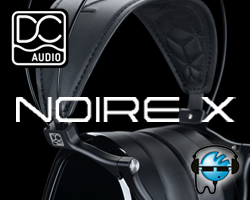





































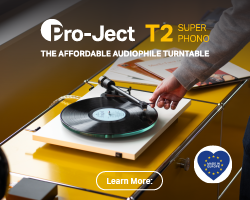




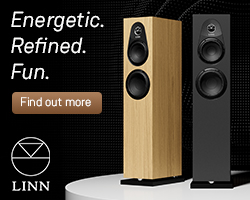





















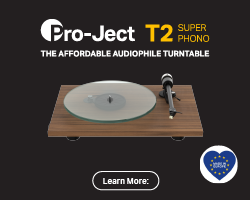



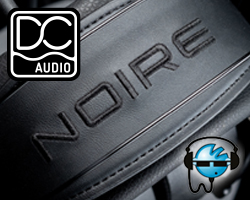
























































You must be logged in to leave a reply.